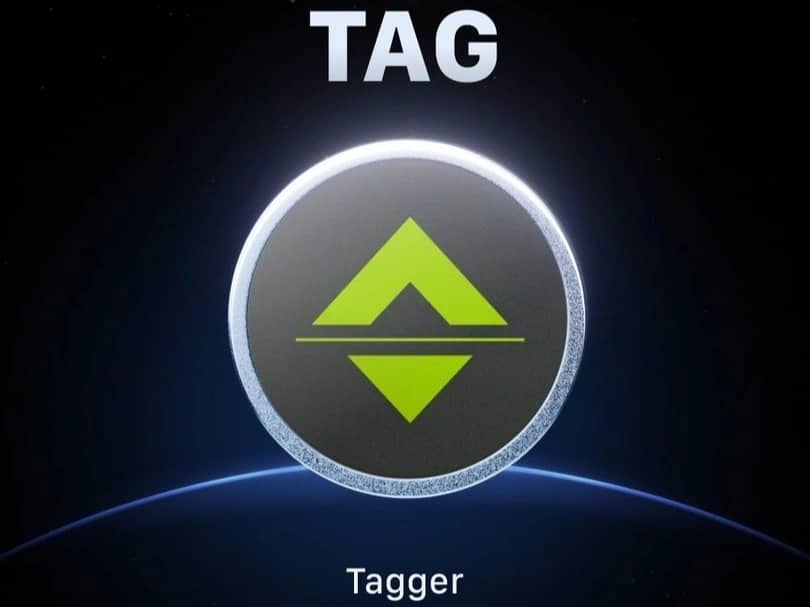订阅 wiki
Share wiki
Bookmark
Tagger
Tagger
Tagger 是一个去中心化的人工智能 (AI) 数据解决方案平台,它利用基于区块链的系统进行数据认证、收集、标记、管理和交易。该平台应用 Web3 原则和去中心化物理基础设施 (DePIN) 框架,为数据贡献和验证创建一个无需许可的环境。[11]
概述
Tagger 旨在解决数据经济中长期存在的挑战,包括数据孤岛、不一致的验证标准、不安全的跨境数据交换以及熟练的数据注释员短缺。该平台的核心目标是实现对高质量、专业数据集的民主化访问,从而扩大 AI 开发的参与范围。它将其去中心化基础设施与 AI 数据工作流程集成,以标准化数据认证、提高数据质量并扩大全球对 AI 就绪数据集的访问。
该生态系统基于 区块链 技术、密码学方法和智能合约,以建立透明且安全的环境。数字证书以非同质化代币 (NFT) 的形式代表数据所有权和知识产权,这些代币记录在链上。该系统激励全球参与者社区协作贡献和标记数据。为了保持这些数据集的质量,Tagger 使用 AI 辅助注释工具和自动过滤。该平台还设有一个去中心化市场,用户可以在可验证的条件下交易、许可或共享数据集。[1] [2]
特点
数据认证协议
该平台的数据认证协议是一个去中心化系统,它使用密码学和智能合约来验证数据所有权和权利,而无需中央机构。当用户上传数据集时,平台会生成一个索引文件,所有者可以铸造一个 NFT 作为可验证的所有权证书。此 NFT 授予持有者对数据集的独家控制权,包括查看、授权使用、发布注释任务、交易或删除的权限。如果数据经过注释,则生成的标记数据集将被加密并链接到新的 NFT,从而确认增强数据资产的所有权。
为了安全起见,Tagger 采用双层混沌加密系统,该系统结合了扩散和置换技术来防止篡改。超混沌和时间序列预测算法进一步加强了这一点,以确保所有数据集保持可验证、加密且能够抵抗未经授权的修改。[3]
AI 数据收集
Tagger 包括一个去中心化模块,用于 AI 数据收集,该模块使用户能够通过基于 区块链 的系统众包数据。当用户创建数据收集任务时,平台会应用自然语言处理 (NLP) 来分析请求,将其与合适的数据类别匹配,并将发布者与可以贡献所需数据的 Web3 参与者联系起来。贡献者上传他们的数据,然后由 Tagger 的 AI 系统验证这些数据,以过滤掉不合格的提交。获得批准后,贡献者将获得基于代币的奖励,奖励金额与他们提交的质量成正比。所有贡献的数据都使用动态混合混沌系统进行加密。收集完成后,任务发布者可以铸造一个 NFT 作为数据集的防篡改所有权证明。[4]
AI 数据标记
该平台提供了一个去中心化系统,用于 AI 数据标记,该系统集成了所有权验证、AI 辅助注释和智能合约。持有数据集所有权 NFT 的用户可以启动注释任务。然后,该平台的索引系统会将这些任务与其 Web3 社区中合格的数据工作者匹配。这些工作者通过安全解密算法访问加密数据,并使用 AI 支持的图形工具来完成标记任务。该系统集成了目标检测算法来识别注释的关键区域,从而减少了手动工作量。集成的 AI 助手会实时监控该过程,以帮助保持注释质量。该平台还将 AI 模型与专家知识库相结合,以帮助工作者准确标记专业数据集。内置的像素识别模块评估注释的完整性和质量,以确保它们符合专业标准。[5]
数据评估、清理和处理
Tagger 利用一个自动化的数据评估和处理框架,该框架采用统计和计算方法来监控数据集标记的准确性。当系统检测到标记性能存在重大差异时,它会隔离相关数据点以进行审查,从而识别异常情况。然后,审查过程中的发现将用于逐步重新训练标记模型,使其能够适应新的数据模式,同时保持一致的准确性。此自动化旨在减少对人工的依赖、提高效率和可扩展性,并最大限度地减少与数据清理相关的错误和运营成本。[6]
数据交易和管理
Tagger 运营一个去中心化市场,用于交换、授权和管理 AI 数据集。该系统旨在通过提供用于验证所有权和促进安全交易的标准化协议来解决由全球数据法规不一致和数据孤岛引起的问题。数据集及其注释经过加密、索引并记录为 NFT,这授予所有者经过验证的控制权来交易或许可其数据。该市场还具有“授权模式”,允许将数据集用于 AI 模型训练,而无需公开原始数据。这是通过隐私保护技术(如联邦学习、高级加密协议和可信执行环境 (TEE))实现的。基于检索增强生成 (RAG) 和大型语言模型的代理辅助数据管理系统支持高效的数据处理、查询和分析。[2]
产品
HITL Telegram 迷你应用程序
人机循环 (HITL) Telegram 迷你应用程序是一个游戏化的应用程序,它允许去中心化的用户社区通过评估 AI 生成的内容来参与 AI 训练。为了减少个人偏见并提高验证的可靠性,每个任务都由九个不同的参与者进行审查。用户通过提供准确的反馈来赚取应用内金币,这些金币可用于升级他们的能力、增加任务奖励并产生被动收入。该应用程序采用季节性奖励模式运行,活跃用户根据其活动、准确性和进度级别获得 $TAGGER 代币的空投。这种结构将去中心化验证与财务激励相结合,以保持数据质量并维持长期用户参与。[7]
监控腕带
作为其 DePIN 战略的一部分,Tagger 开发了一种健康监控腕带。该设备从用户那里收集实时生理数据,包括心率、血压、体温、睡眠模式、血氧水平和其他生物特征指标。收集的数据有助于开发用于健康监控的 AI 模型,特别关注心血管和呼吸系统疾病的早期检测。共享数据的参与者会获得基于代币的奖励,并且数据通过去中心化协议受到保护,以维护用户隐私和安全。由此产生的数据集和 AI 模型旨在提供给国际卫生组织,以支持全球健康研究计划。[8]
TAG
$TAG 是 Tagger 生态系统的原生代币,通过数据工作者的 工作量证明 贡献获得。它用作发布数据任务、质押、购买或租赁数据集、访问软件服务以及自定义 AI 模型等活动的主要媒介。
Tagger 的商业模式将数据工作者、个人 AI 开发人员和 AI 公司联系起来,以促进数据处理、管理和交易。该平台创建和注释官方数据集以供出售或租赁,而用户可以发布与数据相关的任务并使用 $TAG 补偿贡献者。通过其数据认证协议,Tagger 确保安全的数据所有权和交易,市场上的交易会产生少量基于 $TAG 的服务费。[9]
代币经济学
TAG 的总供应量为 405,380,800,000 个代币,其分配如下:[10]
- 人工工作量证明:74%
- Tag-to-Pump:21.06%
- 流动性:4.93%
合作伙伴
发现错误了吗?
